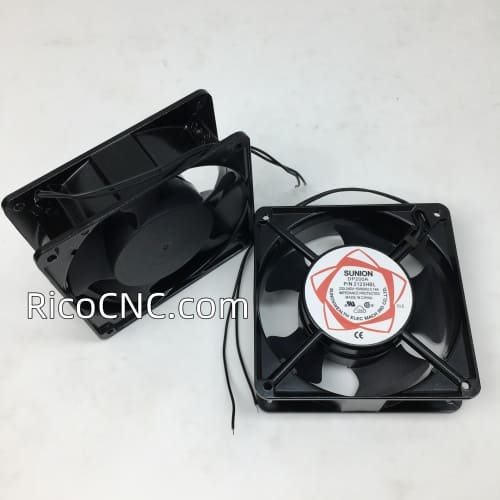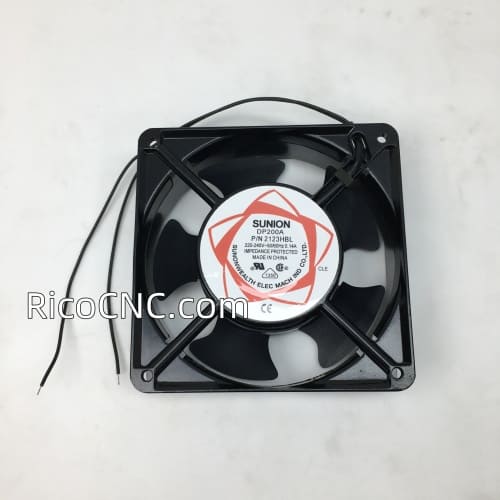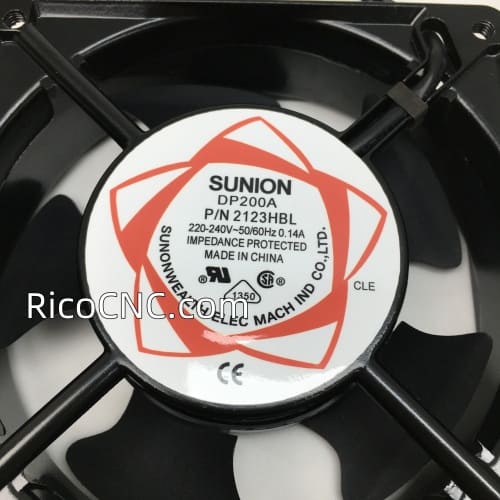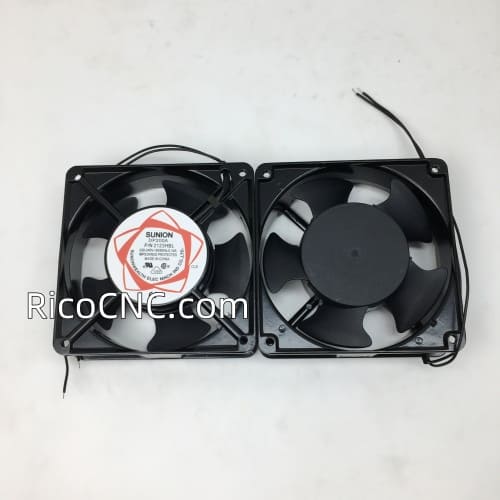

A cooling fan is also a type of centrifugal fan, typically an axial-flow fan. In this article, we'll discuss why a cooling fan doesn't rotate.
How can I check if a cooling fan is damaged?
Power indicator: Check the device's power indicator to see if it's working properly. If not, it could indicate a power supply issue.
Measure the power output: Use a multimeter or other tool to measure the power output.
Replace the power supply: Replace the original power supply with a working one to see if the fan is spinning properly.
Listen for any unusual noises from the fan when it's powered on. This could indicate a fan malfunction.
Check the fan circuit: Check for signs of burns, shorts, or other damage.
Observe the fan's exterior: Check for signs of deformation, burns, or other obvious damage.
Check the cables: Ensure the fan's cables are not loose or damaged.

There are many reasons for a fan not rotating. The following are some common causes.
1. Electrical connection issues: Loose plugs, damaged power cords, or internal shorts are common causes. A loose plug can cause poor contact, preventing the fan from receiving sufficient power to start. A damaged power cord or internal circuit breakage can directly cut off the current flow. To resolve this issue, first check that the plug is securely connected to the socket. If it is loose, re-tighten it.
2. Motor Failure: A short circuit, open circuit, or bearing damage in the motor windings can cause the fan to stop rotating. A short circuit causes excessive current and burns the motor; an open circuit prevents the motor from forming an effective magnetic field, preventing operation. Bearing damage increases motor resistance and, in severe cases, can cause the motor to seize.
3. Starting Capacitor Failure: AC cooling fans often rely on a starting capacitor to help the motor start. If the capacitor is damaged, such as due to reduced capacity or leakage, the motor will not receive the phase-shifted current required for starting, making it difficult to start.

Causes and Solutions for Abnormal Speed
Unstable Power Supply Voltage: When the power supply voltage is too high or too low, the fan motor speed will fluctuate accordingly. If the voltage is too high, the motor speed will increase, potentially causing overheating and damage. If the voltage is too low, the motor speed will slow down, significantly reducing the cooling effect. Use a voltmeter to measure the power supply voltage. If the voltage is abnormal, check the power supply circuit and troubleshoot the fault or contact the power supply department for resolution.
Fan Blade Problems: Blade deformation, dust accumulation, or entanglement can disrupt the fan's dynamic balance, leading to abnormal speed. Deformed blades create uneven air resistance during fan rotation, resulting in unstable speed. Excessive dust accumulation increases blade weight, slowing speed. Entangled objects directly impede blade rotation. Deformed blades can be carefully corrected, but severe deformation requires replacement. Regularly cleaning the blades, keeping them clean, and promptly removing entangled objects can restore normal fan speed.
Motor Wear: After prolonged use, components such as the brushes and commutator within the motor wear, increasing contact resistance and reducing current, which in turn reduces motor speed. If the brushes are severely worn, they can be replaced. If the commutator surface is unevenly worn, gently sandpaper can be used to restore proper contact. However, if the motor is severely worn overall, a new motor may be necessary.
If the above explanations still don't solve the problem, RicoCNC offers a range of fans, including the DP200A 2123HBL SUNON Cooling Fan, R2E220AA40B8 AC Centrifugal Fan, R2S133-AE17-05 EBM-PAPST Fan, 109P0624S7D03 cooling fan system, and 109P0424H6D23 SanAce40 Cooling Fan. We welcome your inquiry.















